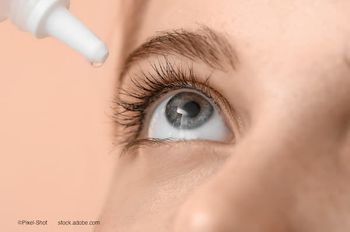
Connect the dots: Diagnosing, managing multifocal choroiditides
Amid multiple prognoses, early treatment for white dot syndromes is key to success.
The various multifocal choroidopathies differ in course, prognosis, and treatment. While the prognoses do differ, they are hopeful with early treatment in most cases.
Acute posterior multifocal placoid pigment epitheliopathy (APMPPE) and multiple evanescent white dot syndrome (MEWDS) are self-limited, spontaneously-remitting diseases for which treatment typically is not needed.
For both, the prognoses are reasonably good and excellent, according to Douglas Jabs, MD, MBA.
Related:
Roughly 75% of patients with APMPPE have a final visual acuity (VA) of 20/40; about 5% have a final VA of 20/200 or worse. Regarding treatment of APMPPE, administration of corticosteroids does not make a sizable difference in the visual outcomes compared with no treatment.
“There is little evidence regarding the benefit of corticosteroids for these patients,” noted Dr. Jabs, a professor of epidemiology, The Johns Hopkins University Bloomberg School of Public Health, and professor of ophthalmology, The Wilmer Eye Institute, The Johns Hopkins University School of Medicine, Baltimore.
Likewise with MEWDS, the average VA outcome is very good, 20/21, and 95% of patients achieve 20/25 or better without treatment.
Patients with central nervous system or systemic vasculitis can have a scenario similar to APMPPE in the eye. The vasculitis should be treated with corticosteroids and immunosuppression.
Patients with birdshot chorioretinopathy (BSCR) lose vision as the result of macular edema and progressive visual field loss. Corticosteroids can effectively treat the macular edema but treatment with doses of 15 mg daily or less results in recurrence of the macular edema, and that dose is too high for safe use over the long term. A safe long-term dose is half of that dose (i.e. 7.5 mg/day or less).
Related:
Immunosuppressive therapy was reported to significantly (P=0.009) prevent the recurrent macular edema by 83%. “This result suggested that treatment of BSCR should start with oral corticosteroids and immunosuppression,” Dr. Jabs said.
Importantly, studies also have shown that pretreatment visual field damage is reversible to some degree. Indocyanine green angiography has shown resolution of the BSCR spots as well as resolution of the damage in the ellipsoid zone on optical coherence tomography images, he commented.
“These results suggested that patients with BSCR can benefit from early immunosuppression therapy along with corticosteroids from the outset of therapy,” he stated.
Multifocal choroiditis with panuveitis (MFCPU) is associated with a very poor visual prognosis if left untreated.
Related:
A series of cases from Johns Hopkins showed that about half the eyes presented with impaired vision, although fewer patients were blind bilaterally, Dr. Jabs reported.
Administration of oral corticosteroids at doses less than 10 mg daily were ineffective, although at doses greater than 10 mg daily they were effective; this suggested that corticosteroid therapy alone was insufficient for these patients, as the disease could not be controlled with doses safe for long-term use.
The key factor for MFCPU seemed to be administration of early immunosuppression treatment, which in one study reduced the likelihood of structural complications with an 83% benefit and markedly reduced the likelihood of blindness by over 90%. This again is another disease in which treatment should be initiated with both immunosuppression and oral steroids, Dr. Jabs suggested.
Punctate inner choroidopathy (PIC) is characterized by a highly variable course and a good prognosis in response to combination therapy of anti-vascular endothelial therapy (VEGF) and immunosuppression. In some cases, it will respond to only anti-VEGF therapy.
Related:
Dr. Jabs described a case that presented before the use of anti-VEGF therapy for this pathology. The patient’s disease spontaneously went into remission.
The only complication was choroidal neovascularization (CNV), which also resolved spontaneously. The patient was not treated. Currently, he likely would have received anti-VEGF therapy for the CNV.
This patient may be the exception. Some patients may experience chronic bilateral CNV that can persist despite treatment with anti-VEGF therapy.
Dr. Jabs noted that those patients may improve with immunosuppression therapy, and the likelihood of development of CNV will decrease if the inflammation becomes inactive.
Related:
CNV occurs quite often in patients with PIC.
“It is the complication that drives therapy for patients with PIC,” he said.
Two case series of patients with PIC, one from the University of Illinois at Chicago and one from Johns Hopkins found that the VA was maintained at at least 20/40 in at least one eye, and the rates of blindness were low, although not zero.
The results again suggested that with PIC early immunosuppression therapy preserves vision by preventing recurrent CNV, Dr. Jabs commented.
A study at the Icahn School of Medicine at Mount Sinai investigated treating MFCPU, PIC, and BSCR, with immunosuppression therapy and found that the VA in patients with these diseases was maintained over a two-year period.
Related:
In addition, the visual fields in the patients with BSCR could be increased. The investigators also lowered the corticosteroid doses to enable long-term dosing.
Dr. Jabs pointed out that in some cases, the dose of immunosuppression therapy required maximization. Two immunosuppressive drugs were needed in some cases.
The relatively few data that are available for this disease suggest that if left untreated it is progressive and ultimately affects both eyes with substantial visual loss. Immunosuppression therapy was shown in small series of patients to stop disease progression and relapses.
Alkylating agents effectively treat serpiginous choroiditis but they are associated with long-term side effects, including an increased risk of cancer, and therefore largely have been abandoned.
“Chronic immunosuppression appears to improve the prognosis for these patients,” Dr. Jabs said.
Related:
In adults requiring immunosuppression, Dr. Jabs begins with 1 mg/kg/day of prednisone or prednisolone that is capped at 60 mg daily and 1 gm of mycophenolate twice daily or 15 mg weekly of methotrexate; the maximal doses of mycophenolate and methotrexate are, respectively, 1.5 gm twice daily and 25 mg weekly; therapy often is escalated promptly to the maximum dose. The prednisolone is tapered over time to discontinuation if possible.
Aditional that could be added as second drugs are tacrolimus (1-3 mg twice daily) or adalimumab (40 mg every other week) in addition to the mycophenolate or methotrexate. If they fail, Dr. Jabs uses a fluocinolone acetonide implant (0.59 mg) (Retisert, Bausch + Lomb).
Related:
This is an ongoing randomized, controlled multicenter national and international clinical trial, which is evaluating the relative merits of adalimumab compared to conventional immunosuppression therapy in patients with noninfectious intermediate uveitis, posterior uveitis, or panuveitis.
The main outcome measure is successful corticosteroid sparing at six months, and the secondary outcomes are successful corticosteroid sparing at one year and prednisone discontinuation. The study is currently enrolling patients.
Douglas Jabs, MD, MBA
E:[email protected]
This is article is based on Dr. Jab's presentation at the American Academy of Ophthalmology 2019 annual meeting. Dr. Jabs has no financial interest in any aspect of this report. Most treatments referred to are administered on an off-label basis.
Newsletter
Don’t miss out—get Ophthalmology Times updates on the latest clinical advancements and expert interviews, straight to your inbox.
















































.png)


